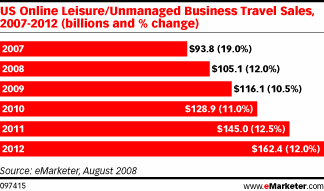 Internet Retailer conducted a study via email participation of 92 "web only" merchants and other's participated and here are the findings:
Internet Retailer conducted a study via email participation of 92 "web only" merchants and other's participated and here are the findings:Though 72 percent of internet retailers plan to purchase e-commerce applications or services this year, they'll be spending less than they expected to spend last year, according to Internet Retailer's latest survey on e-commerce technology spending intentions (via Retailer Daily).
A whopping 73.6 percent of respondents say they plan to increase those budgets 15 percent or less, compared with 49.4 percent of respondents last year who said so; moreover, about half (47.2 percent) say plan to increase those budgets 10 percent or less, the survey found. Below, additional findings from Internet Retailer's survey.
The top spending priorities of online merchants:
Replacing outdated e-commerce platform: 28 percent
Miscellaneous apps: 20.5 percent
Content management system: 11.9 percent
Web analytics: 11.8 percent
Order management system: 8.2 percent
Site search software: 6.8 percent.
Among the top new website features or applications to be implemented:
Customer reviews and ratings: 35.5 percent
Inventory availability tools: 34.2 percent
Blogs, forums or videos: 32.9 percent
Streamlined navigation using Web 2.0: 26.3 percent
Mouse-over tools: 25 percent
Most online merchants, however, intend to keep their current platforms and applications:
67.1 percent intend to keep their rich media applications.
61.7 percent don't intend to replace their web analytics software.
55.2 percent will continue to used their present content management system.
55.2 percent don't plan to buy site search software or service.
52.6 percent will stick with their current order-management system.
46 percent plan to keep their in-house or third-party platform.
Other highlights from the survey:
At two-thirds (67.1 percent) of e-retail companies, the official with the final word on tech purchases is the CEO; next are the CIO (9.2 percent) and CMO (6.6 percent).
The annual e-commerce tech budget is $50,000 or less at 51.4 percent of online retailers; that budget at 27 percent of retailers ranges from $50,001 to $200,000; 9.5 percent have budgets of $200,001 to $999,999; 5.4 percent have $1 million to $2.5 million; and 6.7 percent have budgets of more than $2.5 million.
51.3 percent of the surveyed retailers don't plan to hire a consultant or other third-party help for a major technology upgrade in 2008.
73.7 percent run their own internal fulfillment program. Among the remainder that do outsource fulfillment, 65 percent plan to keep their third-party provider.
About the study: The survey was emailed in early June to subscribers of IRNewsLink, Internet Retailer's e-newsletter; responses were collected and analyzed by Vovici Corp.; 92 web-only merchants, chain retailers, catalog companies and consumer brand manufacturers took part in the survey.
Related: Investment in the web by big retailers will increase even more as top executives at the largest retail chains become more aware of the power of the web in driving multi-channel sales, says Kasey Lobaugh, direct-to-consumer practice leader at consultants Deloitte LLP.
Many retailers today, he says, don’t realize that store sales preceded by visits to retail web sites account for about 20% of sales and online-only sales for another 7%, accounting for 27% of total sales in one way or another driven by the web.
“Today, most retailers only see it as a 93%-7% split, where the 93% of sales are in stores and 7% online; they don’t realize that 20% of store sales are influenced by the web,” Lobaugh says.
But that mindset is changing fast among senior retail executives, he adds, especially as the percentage of total sales driven directly or indirectly by the web grows to about 50% over the next few years. “CEOs will soon recognize that what they thought was 7% of sales driven by the web is actually about 50%, so there is going to be a big shift in investing in a web-focused multi-channel retailing environment,” Lobaugh says.


























